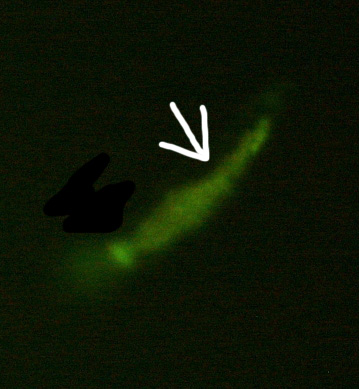User:Alexander S Mikheyev/Notebook/rotifer alien genes/2010/02/11
 Alien genes Alien genes
|
|
CFDA-SE Rotifer Staining- A. vaga from sub'd 12/16/09 plate 1 well 5 - ~10 rotifers per treament TREATMENT Test 40ul of CFDA-SE 1) 1:400 dye dilution a)1 hour b)2 hours 2) 1:800 dye dilution a)1 hour 3) 1:1600 dye dilution a)1 hour
(1) Transfer 3 ml of spring water (pH 4.5-5) to a glass vessel (small glass petri dish or culture tube). (2) Add 10 µl of 10 mM CFDA-SE stock. Mix thoroughly. (To make 10 mM CFDA-SE stock, resuspend an aliquot containing 500 µg CFDA-SE in 90 µl ultrapure DMSO. Store frozen at –20oC.)) (3) Add healthy, well fed animals to be stained in 40ul total volume (a 1:400 final dilution of dye; 25 µM final concentration) (4) Incubate at room temperature for 1-2 hours in a dark location. (5) Pipette off media in the staining dish and add 200ul filtered spring water. Repeat rinse 3-5 times. Rinsing in the dish with retain most of the adults while eggs and juveniles which do not attach as well may be lost. To retain younger animals or if staining in a glass tube: transfer stained animals to a centrifuge tube; spin to pellet all animals; discard supernatant, taking care to not disrupt the animal pellet; add filtered spring water. Repeat 3-5 times. (6) Incubate the stained animals for 15 minutes at room temperature in 200ul filtered spring water. (7) Visualize in the GFP channel of a fluorescent microscope.
 1:400 dilution stained 2 hours - rotifer died at 2:15pm
 1:800 dilution stained 1 hour - rotifer alive after 20 hours Arrow = stained Mastex 1:1600 dilution too faint to distinguish mastex |
|